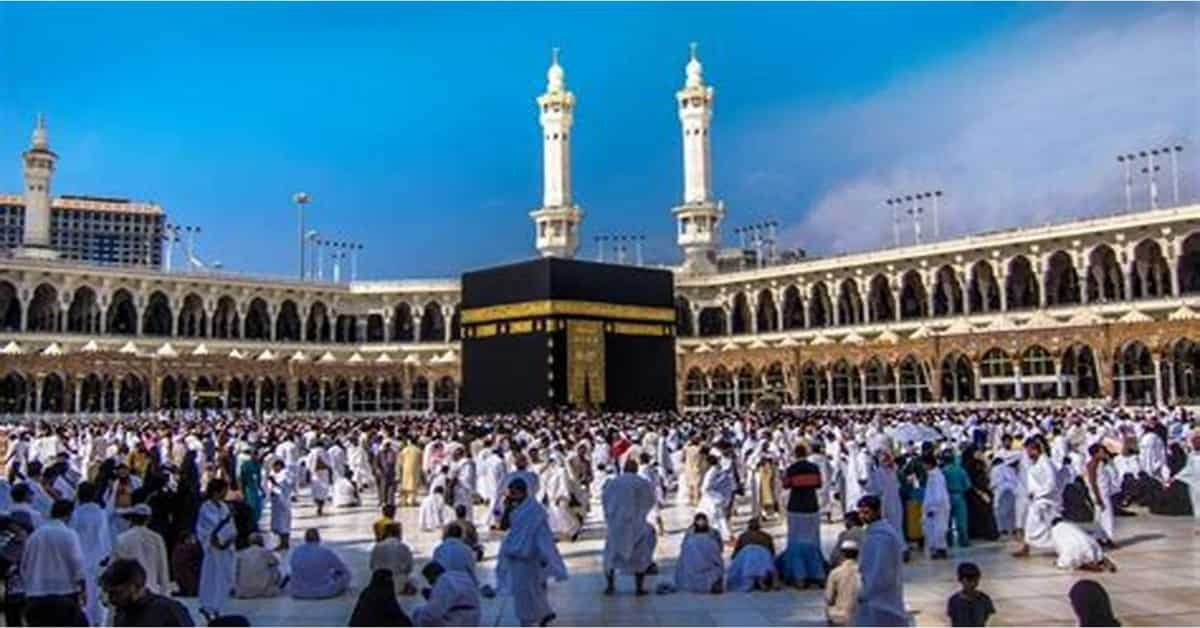Performing Umrah is a significant spiritual journey for Muslims and involves several rituals that can be performed throughout the year. Below is a comprehensive guide to everything you need to know about undertaking Umrah.
What is Umrah?
Umrah is an Islamic pilgrimage to the holy city of Mecca in Saudi Arabia, which can be performed at any time of the year. Unlike Hajj, which has specific dates and is obligatory for Muslims who are physically and financially able to complete it, Umrah is considered a voluntary act of worship that carries great spiritual significance and rewards.
Key Points about Umrah:
- Rituals Involved: The rituals of Umrah include entering a state of Ihram, performing Tawaf (circumambulating the Kaaba), and Sa’i (walking between the hills of Safa and Marwah).
- Purpose: Umrah serves as an opportunity for Muslims to seek closeness to Allah, repentance, and the forgiveness of sins.
- Spiritual Benefits: It is believed to provide immense spiritual benefits, purify the heart, and strengthen one’s faith.
Overview of Umrah
Umrah is often called the “lesser pilgrimage” compared to Hajj, which has specific dates and is obligatory for Muslims. While Umrah is not obligatory, it is highly recommended and offers spiritual rewards.
Essential Preparations
- Intention (Niyyah): Make a sincere intention in your heart to perform Umrah. It’s not necessary to voice it out loud but should be understood internally.
- Documentation: Ensure you have:
- A valid passport.
- Visa for Umrah (check current regulations).
- Any necessary travel arrangements, including accommodation and flights.
- Health & Safety: Consider vaccinations and carry any necessary medications. Stay hydrated, especially in the Saudi climate.
Steps to Perform Umrah
1. Entering the State of Ihram
- What is Ihram?: A sacred state that a pilgrim enters before performing Umrah.
- For Men: Wear two white, unstitched garments—one wrapped around the waist and the other draped over the shoulder. Footwear should be simple sandals.
- For Women: Dress in simple, modest clothing that covers the body except for the face and hands; no specific color is mandated, but it should adhere to Islamic modesty.
- When to Enter Ihram: Ihram is worn before entering Mecca, typically at designated Miqat (locations).
- Talbiyah: Recite the following upon entering the Ihram state:
- “Labbayk Allahumma Umrah” (Here I am, O Allah, to perform Umrah).
2. Entering Mecca
- As you approach Mecca, recite the Talbiyah. Upon entering the city, continue reciting until you reach the Masjid al-Haram.
3. The Tawaf
- What is Tawaf?: The ritual of circling the Kaaba seven times in a counter-clockwise direction.
- Procedure:
- Enter the Masjid al-Haram with your right foot and say a prayer.
- Begin at the Black Stone (Hajr al-Aswad).
- If possible, touch or kiss the Black Stone. If it’s crowded, simply point towards it each time you pass.
- After seven circuits, conclude at the Black Stone.
4. Prayer Behind Maqam Ibrahim
- After completing Tawaf, perform two Rak’ahs of prayer behind the Maqam Ibrahim (the Station of Ibrahim). You can do this anywhere in the mosque if it’s crowded.
5. Drinking Zamzam Water
- Go to the Zamzam well located within the Masjid al-Haram. Drink the water and say a prayer when you do so, as Zamzam is known for its blessings.
6. Performing Sa’i
- What is Sa’i?: The act of walking between the hills of Safa and Marwah seven times.
- Procedure:
- Start at Safa, face the Kaaba, and make a supplication.
- Walk to Marwah, recite the necessary prayers, and return to Safa; this counts as one round.
- Complete a total of seven rounds, finishing at Marwah.
7. Tawaf al-Ifadah
- This is a second Tawaf that can be performed after Sa’i. It is similar to the first Tawaf and can be completed on the same day or later during your stay.
8. Shaving or Cutting Hair (Taqsir)
- After completing the rituals, men should either shave their heads or cut a portion of their hair. Women should clip a small portion from their hair. This act signifies the end of Umrah.
9. Completing Ihram
- After the Taqsir, you can remove your Ihram and return to regular clothing, marking the completion of the Umrah.
Important Etiquette and Recommendations
- Make Du’a: Throughout your rituals, continuously make personal supplications; it’s a time for reflection and spiritual connection.
- Avoid Arguments: Maintain a peaceful demeanor and avoid conflicts or arguments during the pilgrimage.
- Respect Sacredness: Maintain respect for the places and individuals around you, as this is a sacred pilgrimage.
Tips for Performing Umrah
- Stay Hydrated: Given the climate in Saudi Arabia, drink plenty of water to stay hydrated.
- Plan Ahead: Consider booking accommodations in advance and have your logistics planned to ease the journey.
- Be Mindful of Time: Prayer times may affect access to certain rituals; plan accordingly.
- Respect Health Guidelines: Follow any health and safety guidelines issued by Saudi authorities.
After Performing Umrah
- After completing your Umrah, many pilgrims express their gratitude through additional prayers, reflection, and engaging in good deeds.
Conclusion
Performing Umrah can be a deeply fulfilling experience. It requires preparation, sincerity, and a focus on spiritual goals.
FAQs About Performing Umrah
Here’s a list of frequently asked questions (FAQs) about performing Umrah, along with their answers:
1. What is Umrah?
Umrah is a pilgrimage to Mecca that can be performed at any time of the year. It is often referred to as the “lesser pilgrimage” compared to Hajj.
2. Is Umrah mandatory?
No, Umrah is not obligatory, but it is highly recommended for Muslims as it provides spiritual rewards and has great significance.
3. What are the main rituals of Umrah?
The primary rituals of Umrah include:
- Entering the state of Ihram
- Tawaf (circumambulating the Kaaba)
- Prayer behind Maqam Ibrahim
- Drinking Zamzam water
- Sa’i (walking between the hills of Safa and Marwah)
- Tawaf al-Ifadah
- Cutting hair (Taqsir)
4. What is the Ihram?
Ihram is the sacred state a pilgrim enters before performing Umrah or Hajj. It involves specific clothing: men wear two white, unstitched garments, while women wear simple, modest clothes.
5. When should I enter the state of Ihram?
You should enter the state of Ihram before crossing the designated Miqat, which are specific locations around Mecca.
6. What is the significance of Tawaf?
Tawaf is an essential ritual that involves circling the Kaaba seven times. It symbolizes unity and the centrality of God in a Muslim’s life.
7. How should I make prayers during Umrah?
You can freely make personal supplications (du’a) during the rituals, particularly during Tawaf, Sa’i, and after prayers. There are no fixed prayers.
8. Can I perform Umrah at any time?
Yes, Umrah can be performed at any time of the year, unlike Hajj, which has specific dates.
9. Is there a specific order for performing the rituals?
While the sequence listed in comprehensive guides is recommended, if circumstances prevent you from following it strictly, you can still perform the rituals in a way that fulfills them.
10. What is Taqsir?
Taqsir is the ritual of cutting hair performed after completing the Umrah. Men can shave their heads or cut a portion of hair, while women should clip a small amount from their hair.
11. What are the health and safety considerations?
Stay hydrated, wear comfortable shoes, and be mindful of your health, especially in the climate of Saudi Arabia. Follow any health guidelines set by authorities.
12. Can I take photographs during Umrah?
While it is generally allowed, be respectful of the sacred environment and avoid distracting others. Always be mindful of privacy.
13. What should I do if I feel overwhelmed during the pilgrimage?
Take deep breaths, find a quiet place to regroup, and make du’a for calmness and clarity. Remember to pace yourself throughout the rituals.
14. Is there any dress code for women?
While there is no specific dress code, women should wear modest clothing that covers their body. The Ihram should be simple and free from decorative elements.
15. How can I prepare spiritually for Umrah?
Increase your knowledge about Umrah, read relevant texts, pray regularly, and focus on intentions to make the experience more meaningful.


